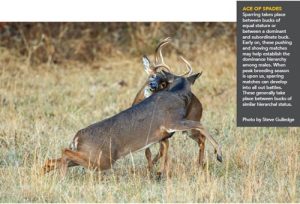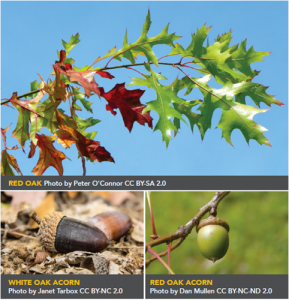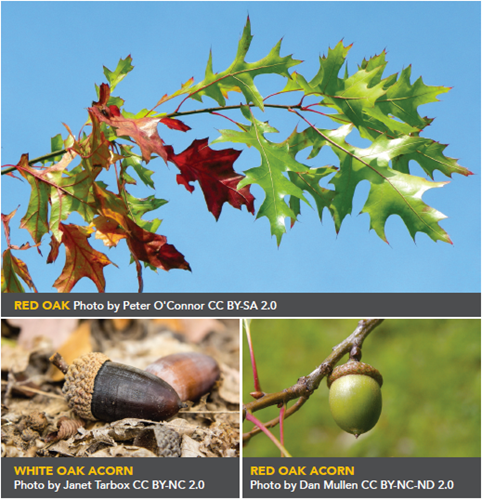MDWFP Release
By Nathan Blount
We all have those hunting buddies who seem to get it done no matter what. Whether faced with a new property, lackluster weather, or changes to their stomping grounds, they never come home empty-handed. What is it that sets these hunters apart? The answer is simple: woodsmanship.
Woodsmanship can loosely be defined as the essential skillset of the outdoorsman, especially as it relates to hunting. The best woodsmen have extensive knowledge about their targeted quarry. They learn their hunting areas intimately and interpret animal sign almost unconsciously. They determine which plants are preferred foods and recognize how animals utilize terrain. They always ensure the wind is their ally and stay sharply attuned to nature’s sounds. The journey to expertise in woodsmanship could take years, but its payoff is well worth the challenge.
 Know your quarry
Know your quarry
The most fundamental building block of good woodsmanship is a thorough understanding of one’s quarry. It is essential to know the diet, habitats, social behaviors, and seasonal needs. The more you know, the better. Many hunters make the mistake of only knowing the animal during hunting season, but time spent studying your quarry in the offseason is just as useful. The more effort you spend uncovering why animals do the things they do, the more likely your path will intersect with theirs somewhere down the line.
Know your area
Animals tend to use land the same way generation after generation. Therefore, great woodsmen often know their hunting areas like the back of their hand. No nook or cranny goes unnoticed. Hot spots will be discovered and explored. This level of intimacy only comes through worn boot leather. It is no surprise that good woodsmen get out in the woods every chance they can.
Reading sign
Tracks and scat are the most straightforward wildlife sign to recognize, but they are not the only thing noticed by experienced woodsmen. Beds, evidence of feeding, and breeding-season markers, like scrapes and rubs, tell a tale. Since animals must eat, feeding sign can be the most important of all. Hunters should always be on the lookout for browsed vegetation. Deer often munch on the tip of green vegetation, as this is normally the most palatable and nutritious part. When the mast is falling, look for remnants such as crushed acorns, fruit cores, or bean pods.
Sign left behind by non-target species can also be worthy to note. Turkey scratching could indicate an abundance of acorns. Raccoons, foxes, and coyotes relish persimmon fruit, which is reflected in their scat. Persimmon also happens to be a preferred deer food. Information like this can prove beneficial to the skilled deer hunter.
Take advantage of the weather when scouting for sign. After a rain is a great time to scout as it is easier to determine how fresh sign is. Storms can knock down a lot of acorns quickly. A keen eye can spot disturbance in heavy dew or frost. This can be useful in determining where deer are entering and exiting open feeding areas.
Know your plants
 The best woodsmen usually can identify many of the native plants in their hunting area and know the preferred browse. This can be especially important in early autumn, before acorn drop, but is also useful deeper into winter because deer could begin feeding on plants they rarely touched previously.
The best woodsmen usually can identify many of the native plants in their hunting area and know the preferred browse. This can be especially important in early autumn, before acorn drop, but is also useful deeper into winter because deer could begin feeding on plants they rarely touched previously.
All hunters know deer like acorns, but if acorns are aplenty, deer will often choose one species over another. In general, deer prefer the white oak family over the red oak family because of differences in their chemical composition. The oak families also differ when it comes to acorn maturation. White oak acorns fully mature in one year, while red oak acorns take closer to two years. So, some seasons white oaks might produce better than red oaks, or vice versa. For these reasons knowing your oak species can pay big dividends.
Topography
Many of today’s hunters are familiar with satellite imagery and mapping applications, such as Google Earth. For the past century, good woodsmen have been utilizing another, older map form: topographical maps. Topographical maps (aka “topo maps”) use contour lines to depict elevation changes and display numerous other geographic features such as water sources, roads, boundaries, and trails.
Deer will utilize terrain to their advantage and usually choose the path of least resistance when traveling undisturbed. In hilly terrain, deer will cross ridge tops in low spots called “saddles” to minimize exposure. “Benches” are flat areas along a hillside that deer favor because of ease of travel. Ridge points or “fingers” are popular bedding spots as they provide a visual and olfactory advantage.
Topo maps are not just useful in the hills. In the bottomlands, topo maps can reveal slight ridges deer use for traveling. A few feet of elevation can be the difference between wet and dry. Plant communities also change in bottomlands with minimal variations in elevation. Water features such as sloughs, wetlands, and creek bends are depicted on topo maps and make excellent spots for deer to funnel around. It is easy to see how learning to interpret topographical maps can be invaluable.
Hunt the wind
Good woodsmen are always cognizant of the wind and ideally situate themselves downwind of where most deer activity is expected. It can be beneficial to have multiple stands in an area to take advantage of various wind directions. It is also important to consider the approach to the stand to prevent alerting deer to your presence before you even arrive.
Wind behavior can be a bit unpredictable. In hilly terrain, air temperature affects wind behavior. These are called thermal winds. As the air warms in the morning, it tends to rise uphill. The opposite is true for evenings. As the air cools, it begins to fall. Hollows and bottoms between ridges are prone to swirling winds. Winds are normally more predictable in gentler terrain, but there are some sites where the wind always seems to swirl inconsistently. These sites are best found through experience.
Listen
How many times have you been sitting on a stand, heard the rustling of dry leaves, and immediately gotten excited? And then a squirrel pops out. Even the best hunters are sometimes fooled, but with close observation, you can more accurately identify sounds in the woods. Deer typically have more cadence to their footsteps than a squirrel or armadillo. As the rut approaches, there are other sounds to listen for, such as the “chasing” of a buck on the trail of a doe, grunts, or even the sound of clashing antlers. Each of these situations could call for more aggressive action depending upon the hunter’s experience and comfort level.
It is also important to pay close attention to the sounds of non-target animals. Birds and squirrels can often alert a hunter to incoming deer. Squirrels will bark and blue jays will jeer at other animals. The cawing of a crow can reveal the location of a downed animal. Familiarize yourself with these alarm calls.
Lastly, be aware of your own sounds. A human walking fast through the woods can alarm wildlife because it sounds unnatural. Slow your pace, avoid stepping on sticks, and even take short pauses to sound more natural. You want to arrive at your stand undetected, yes?
Conclusion
Woodsmanship encompasses all these topics and more, and becoming a better woodsman makes you an all-around better hunter. So, challenge yourself this fall. Put your woodsmanship skills to the test by hunting a new area. Venture out and explore one of the state’s many Wildlife Management Areas. Scour topo maps, mark features of interest, and then put boots on the ground. Learn the vegetation and food sources. Pay close attention to the area’s features and look intensively for sign. Try to put the pieces of the puzzle together. Successful or not, you will get to enjoy some new scenery while honing your woodsmanship skills at the same time.
Nathan Blount is MDWFP’s biologist for the Northeast WMAs.



